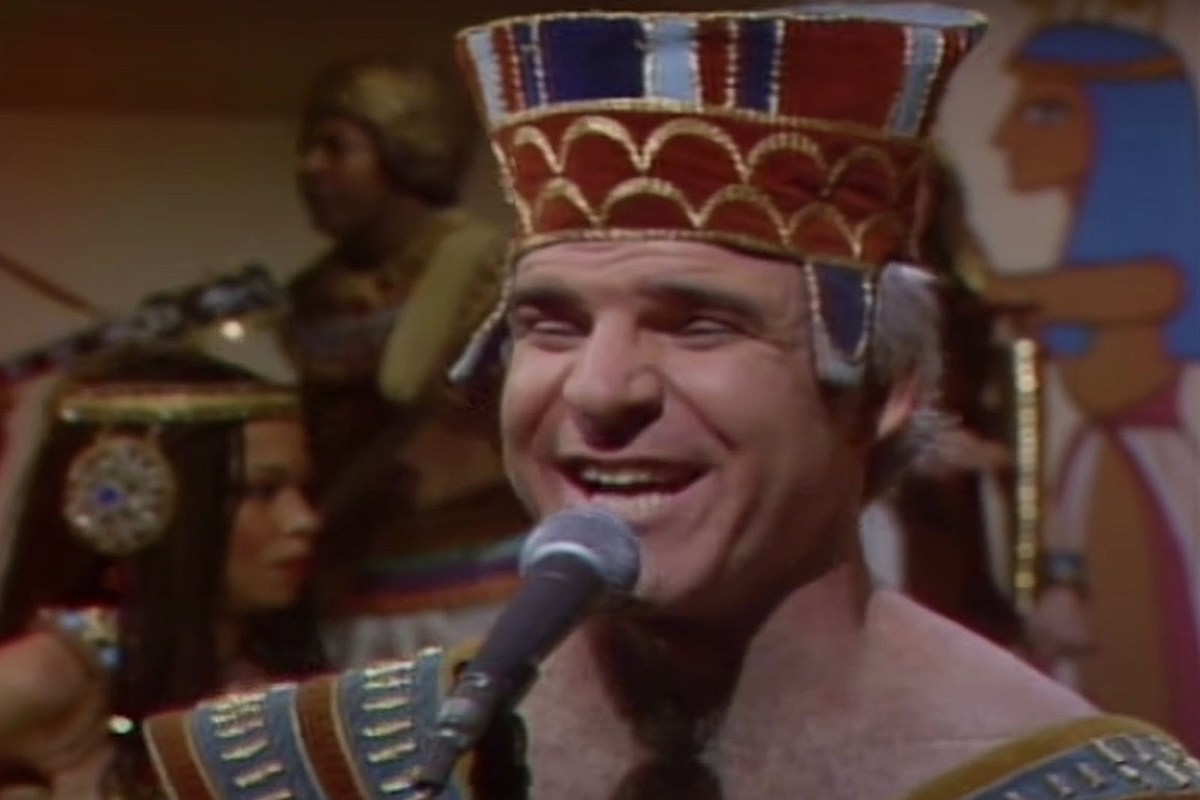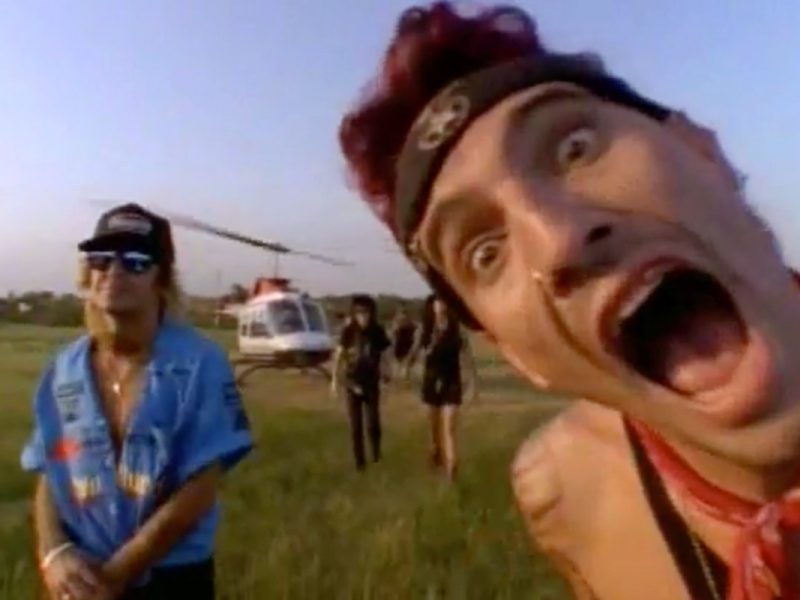“I’d like to talk seriously, just for a moment,” Steve Martin said on the April 22, 1978, episode of Saturday Night Live. His solemnity was only marginally undercut by the fact that he was draped in stereotypical ancient Egyptian garb, with a multicolored and architectural hat atop his head.
Martin’s lecture arrived midway through the show, leaving plenty of time to put together what turned out to be one of the most popular and elaborately silly pieces had ever attempted on SNL.
Standing in darkness, Martin went on to explain how the impossibly commercialized “Treasures of Tutankhamun” museum tour then sweeping the U.S. had taken him aback. He described the souvenir-hawking nature of the traveling exhibit as “a national disgrace,” revealing that he’d been moved to isolate himself in the woods to come up with an appropriate lyrical response to this crass exploitation of the remains of the famed Eighteenth Dynasty boy king.
Martin promised that his musical rebuke partook of “the ancient modalities and melodies,” and kiddingly wished for everyone to learn from his example. Then the lights went up to reveal the Saturday Night Live band, in its entirety, shirtlessly kitted out just like Martin on a lavishly decorated set straight out of a Hollywood mummy movie. Martin’s elaborate gag was sprung.
He struck the first of multiple dance moves evoking the two-dimensional poses of ancient hieroglyphs, while those “ancient melodies and modalities” turned out to be a hackneyed and decidedly not-Egyptian “Arabian riff.” Two Cleopatra-styled dancers flanked Martin as the band kicked into a loping, funky rhythm. “King Tut” then unfolded as a deeply anachronistic and inaccurate tale of untold wealth, early death, and eventual worldwide commodification.
The show-stopper came when SNL sax player Lou Marini emerged from the set’s central sarcophagus to blow a killer solo. At the very sight of the mustachioed Marini coated in gold body paint, the crowd erupted, kicking Martin’s silly spectacle into overdrive.
Then back for his fifth hosting stint, Martin famously brought “King Tut” to SNL as something of an afterthought, only for producer Lorne Michaels to seize upon Martin’s embryonic ditty as the wacky centerpiece for what would eventually be considered one of Saturday Night Live’s best all-around episodes. The resulting tomb set and costumes represented the most money Michaels had ever spent on a single sketch, according to Doug Hill and Jeff Weingrad’s Saturday Night.
Watch Steve Martin’s ‘King Tut’ Skit
The “King Tut” lyrics ended up taking some mild swipes at the lucrative wave of commemorative Tutankhamun “trinkets and toys, t-shirts and posters.” At one point, Martin worshipfully presented a blender to Marini’s sax-playing Tutankhamun, before singing: “Now, if I’d known they’d line up just to see you, I’d trade in all my money and bought me a museum.”
Mainly, however, the joke of the piece was that it exists at all, let alone in such an over-the-top form: As a stand-up, Martin made a career of lampooning show-business glitz and self-importance while buffoonishly celebrating both, and the sketch’s abrupt switch from the professorial to the inveterate lounge lizard is prime ’70s Martin.
Another key to the success of “King Tut” was Saturday Night Live’s early integration of music and comedy, something that quickly evaporated as the show’s musical guests became more of a ratings-grabbing obligation. In its early days, SNL had a tradition of roping its excellent studio band of accomplished session players into conceptual bits: Lily Tomlin crooned a version of “St. James Infirmary” in a nurse outfit, alongside the identically costumed “Howard Shore and His All-Nurse Band,” while the bee-costumed John Belushi and Dan Aykroyd performed “I’m a King Bee” in the midst of an all-bee ensemble.
With “King Tut,” the band’s enthusiastic participation in the elaborate goof is as much a part of the gag as the song itself, their costumed backing a testament to just how big SNL was willing to go for such a trifling comic conceit.
“King Tut” then made unexpected news some 40 years later, when a group of college students protested the song’s inclusion in a humanities class on the grounds of cultural appropriation. It’s a thorny issue, to be sure, but Martin’s whole schtick in the piece is making fun of the American cultural tradition of turning other cultures into fetishized and garish spectacle. It’s also just an excuse for the ascendant Martin to mine his double-vein of intellectualism and absurdity to outsized success: Martin later re-recorded the track for his sophomore 1978 comedy album, and A Wild and Crazy Guy sold more than a million copies.
The single sold disproportionately well in cities that hosted “The Treasures of Tutankhamun,” thus turning Martin’s silly take on commercialism into just another of the “trinkets and toys, t-shirts and posters” hoarded by Americans caught up in King Tut fever. Chicago’s WLS pushed “King Tut” so feverishly on its airwaves after the exhibit’s run at Chicago’s Field Museum that the song was named the radio station’s 11th biggest hit of the year.
As Martin himself sang amid nonsensical claims of the boy king moving to Arizona, eating a crocodile, and being “buried in his jammies,” history has proved that the short-lived pharaoh Tutankhamun did, in fact, “give his life for tourism.”
15 Guests Who Were Banned From ‘Saturday Night Live’
Did ‘SNL’ Finally Confirm the Fifth Beatle?



